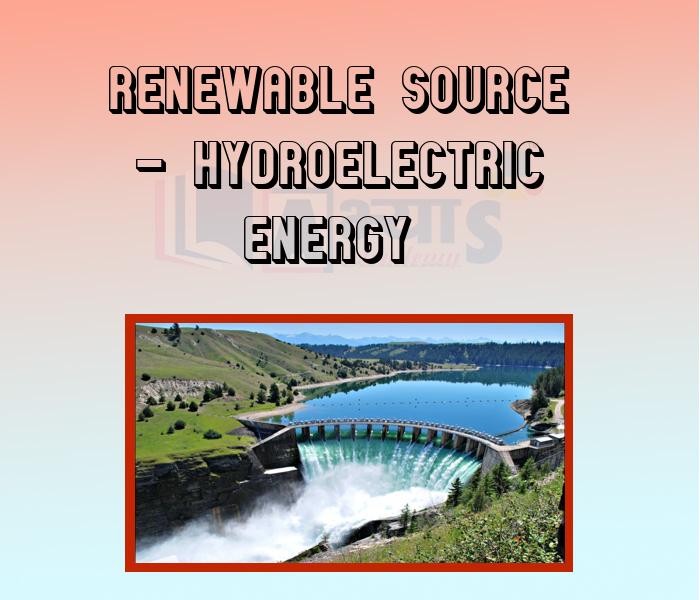Renewable Source - Hydroelectric Energy











Renewable Source - Hydroelectric Energy
Renewable Source - Hydroelectric Energy: The electricity generated by moving the turbines of a generator using the energy of fowing water (or falling water) is called hydroelectric energy or hydel energy. During rain or snowfall, the potential energy of water molecules is converted into kinetic energy. When ice at higher altitudes melts, Its gravitational potential energy is converted in to kinetic energy and it flows as a stream of water or as a river. If we storerainwater by constructing a dam, the water has higher potential energy.
When this water is allowed to fall from a height, its potential energy is converted to kinetic energy. This kinetic energy of flowing water can be used to rotate the turbine blades along with the armature of electric generator to produce electricity There are a number of large hydroelectric power stations in India, famous ones being at Bhakra Dam Hirakund Dam and Narmada Sarover Dams. Mini hydroelectric power plants can be constructed in hilly regions or at small dams if the water falls from the height of at least 10 meters.
Advantages:
1. Once completed, the hydroelectric power station needs only maintenance and proper management, which is not much costly.
2. A dam constructed for hydroclectric power station can also be used for irrigation and it helps prevent floods.
Limitations:
1. The cost of installation (construction) of a hydroelectric power station is very high.
2. The requirement of a large area for constructing the dam leads to destruction of forests and causes a great ecological imbalance.
Students / Parents Reviews [10]
Abhyas Methodology is very good. It is based on according to student and each child manages accordingly to its properly. Methodology has improved the abilities of students to shine them in future.

Manish Kumar
10thMy experience with Abhyas is very good. I have learnt many things here like vedic maths and reasoning also. Teachers here first take our doubts and then there are assignments to verify our weak points.

Shivam Rana
7thA marvelous experience with Abhyas. I am glad to share that my ward has achieved more than enough at the Ambala ABHYAS centre. Years have passed on and more and more he has gained. May the centre flourish and develop day by day by the grace of God.

Archit Segal
7thMy experience was very good with Abhyas academy. I am studying here from 6th class and I am satisfied by its results in my life. I improved a lot here ahead of school syllabus.

Ayan Ghosh
8thIt has a great methodology. Students here can get analysis to their test quickly.We can learn easily through PPTs and the testing methods are good. We know that where we have to practice

Barkha Arora
10thAbhyas is a complete education Institute. Here extreme care is taken by teacher with the help of regular exam. Extra classes also conducted by the institute, if the student is weak.

Om Umang
10thIt was a good experience with Abhyas Academy. I even faced problems in starting but slowly and steadily overcomed. Especially reasoning classes helped me a lot.

Cheshta
10thOne of the best institutes to develope a child interest in studies.Provides SST and English knowledge also unlike other institutes. Teachers are co operative and friendly online tests andPPT develope practical knowledge also.

Aman Kumar Shrivastava
10thIt was good as the experience because as we had come here we had been improved in a such envirnment created here.Extra is taught which is beneficial for future.

Eshan Arora
8thBeing a parent, I saw my daughter improvement in her studies by seeing a good result in all day to day compititive exam TMO, NSO, IEO etc and as well as studies. I have got a fruitful result from my daughter.
